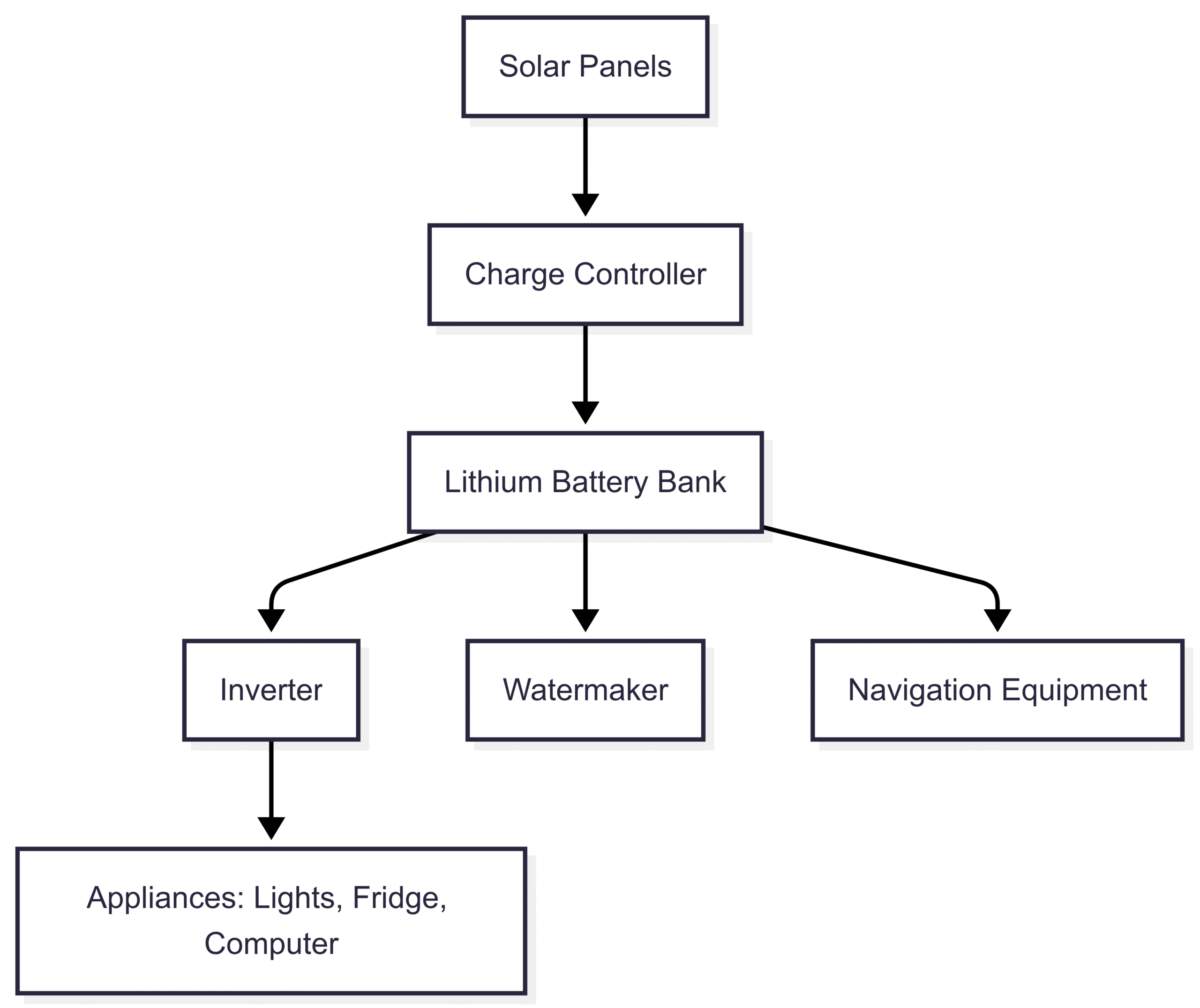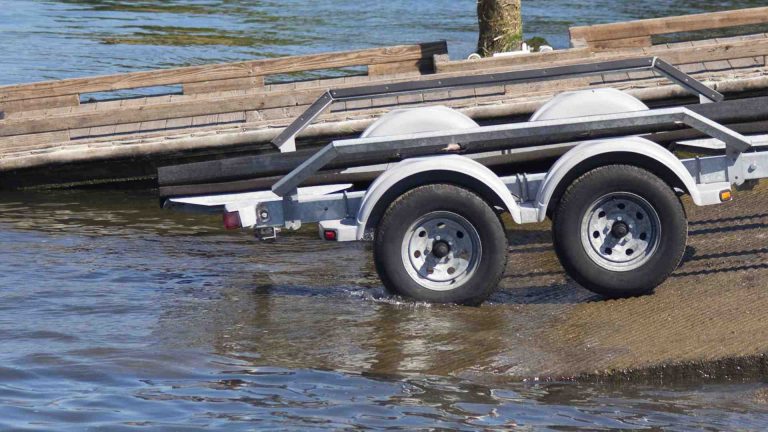5 REASONS Why Living on a SAILBOAT is Awesome
Discover why living on a sailboat is awesome! Explore freedom, minimalism, and adventure with key considerations for a fulfilling liveaboard lifestyle.
Living on a sailboat is a dream for many, offering unparalleled freedom, adventure, and a connection to nature that’s hard to find elsewhere. For those considering this lifestyle, especially retirees like the individual from New Orleans planning to sail the Gulf, Caribbean, and U.S. East Coast, the liveaboard life is both exhilarating and challenging. Based on insights from experienced sailors and liveaboards, this article explores five compelling reasons why living on a sailboat is awesome, while addressing key considerations and potential pitfalls to ensure a realistic approach. From embracing minimalism to mastering boat maintenance, here’s why this lifestyle captivates so many, along with practical advice to navigate its challenges.
1. Unmatched Freedom and Adventure
The Allure of the Open Water
Living on a sailboat offers a sense of freedom that’s unmatched by land-based living. You’re not tied to a single location; your home moves with you, allowing you to explore new horizons, from the turquoise waters of the Caribbean to the tranquil bays of the Gulf Coast. For someone in New Orleans, the Gulf of Mexico and nearby Caribbean islands like the Bahamas or the Florida Keys are within reach, offering endless opportunities for adventure. The ability to wake up to a new view, chase sunsets, or anchor in a secluded cove embodies a lifestyle of exploration and spontaneity.
Real-World Perspective
Experienced liveaboards emphasize that this freedom comes with responsibility. One sailor noted, “It’s high highs and low lows, but rarely mundane.” The thrill of sailing to a new destination is tempered by the need for preparedness. For example, planning routes along the Intracoastal Waterway (ICW) or to Caribbean islands requires understanding draft and mast height limitations, as boats with drafts over 6 feet or masts over 64 feet may face challenges on the ICW.
Practical Considerations
To maximize this freedom, invest in reliable navigation tools like Navionics or OpenCPN, which provide detailed charts and real-time positioning. An AIS transponder linked to a plotter is also essential for safety, especially in busy coastal waters. For the New Orleans retiree, joining local sailing clubs like the New Orleans Yacht Club for Wednesday race nights can provide hands-on experience and networking opportunities to learn about ideal cruising routes.
Chart: Sample Cruising Route from New Orleans

This chart outlines a potential route starting from New Orleans, moving along the Gulf Coast to Florida, and extending to the Caribbean, highlighting the freedom to explore diverse destinations.
2. Embracing Minimalism and Simplicity
The Joy of Less
Living on a sailboat forces you to adopt a minimalist lifestyle, which many find liberating. With limited storage, you prioritize essentials, shedding unnecessary possessions. This simplicity fosters a sense of clarity and contentment, as you focus on experiences rather than material goods. As one liveaboard advised, “Figure out how to live simply, and then simplify.” For the retiree, this means evaluating what’s truly necessary for life aboard a 35-40 foot sailboat, such as clothing, tools, and personal items.
Challenges of Space
Space constraints are a significant adjustment. One sailor humorously suggested, “Get a camp stove and live in your bathroom for a few weeks.” A 35-foot boat typically offers 1-2 cabins, a small galley, and a head, with storage for 7-8 days of food and 4-6 days of water and waste. To manage, invest in space-saving solutions like fold-up bicycles (priced around $150-$280) for shore trips and collapsible storage bins. A custom foam mattress ($500-$1,000) can enhance comfort in cramped berths.
Practical Tips
- Inventory Assessment: List all possessions and categorize them as essential, optional, or unnecessary. Aim to keep only what fits in designated storage areas.
- Quality Over Quantity: Invest in high-quality, durable items, as one sailor noted, “Don’t buy cheap tools—quality equipment increases relaxation time.”
- Practice Run: Spend time on a chartered boat to test living with minimal possessions, helping identify what you can live without.
Table: Essential Items for Minimalist Living
| Item | Purpose | Approx. Cost |
|---|---|---|
| Fold-up Bicycle | Shore transportation | $150-$280 |
| Collapsible Bins | Storage for clothes and gear | $20-$50 |
| Custom Foam Mattress | Comfortable sleeping in small berths | $500-$1,000 |
| Stovetop Espresso Maker | Daily coffee fix | $30-$100 |
| Handheld Vacuum (Dyson DC34) | Cleaning sand and crumbs | $150-$200 |
3. Connection to Nature and Self-Sufficiency
Living with the Elements
Sailboat living immerses you in nature, from dolphins swimming alongside to starry nights at anchor. This connection fosters a deep appreciation for the environment and a self-sufficient lifestyle. Generating your own power via solar panels ($500-$2,000 for a 200W system) and producing water with a watermaker ($3,000-$7,000) allows you to stay off-grid longer, enhancing the sense of independence.
Maintenance and Self-Reliance
Self-sufficiency comes with a steep learning curve. As one liveaboard put it, “Living aboard is more about maintenance and stewardship than sailing.” You’ll become a jack-of-all-trades, handling plumbing, electrical work, and diesel mechanics. For the New Orleans retiree, reading Nigel Calder’s books on diesel maintenance and taking ASA courses or local diesel mechanics classes (around $200-$500) is crucial.
Key Systems for Self-Sufficiency
- Power Generation: A 200-400W solar panel system with a lithium battery bank ($1,000-$3,000) ensures reliable electricity for lights, refrigeration, and internet.
- Water Management: A watermaker producing 20-40 gallons per hour ($3,000-$7,000) supports laundry and showers, critical for extended cruising.
- Head System: A composting toilet ($800-$1,500) simplifies waste management, avoiding pump-out costs and maintenance issues with traditional heads.
Chart: Power Generation System

This chart illustrates a typical power generation setup, showing how solar panels feed into a battery bank to power essential systems.
4. Community and Camaraderie
The Sailing Community
The liveaboard community is tight-knit and supportive, offering a sense of camaraderie that’s hard to find elsewhere. In New Orleans, joining the New Orleans Yacht Club or connecting with local sailors via marina notice boards or Facebook groups can lead to crew opportunities and shared knowledge. As one sailor advised, “Walk the docks with a 6-pack—people are willing to include newbies.”
Learning from Others
Experienced sailors are often eager to share tips, from maintenance hacks to navigation tricks. For example, one liveaboard suggested using silicone wine bottle stops ($5-$10) for covering engine pipes, and another recommended tin foil for cleaning stainless steel. Engaging with the community through local regattas or online forums like the Liveaboard Sailing podcast can accelerate your learning curve.
Practical Steps
- Join Local Clubs: The New Orleans Yacht Club offers affordable memberships (around $400-$500/year) and race nights to meet sailors.
- Crew Opportunities: Look for “find crew” sections on yacht club websites or marina boards to gain experience on different boats.
- Online Resources: Listen to podcasts like Liveaboard Sailing or read books by Fatty Goodlander for practical insights.
5. Cost-Effective Coastal Living
Financial Benefits
Living on a sailboat can be more affordable than coastal real estate, especially in pricey areas like the Gulf Coast or Caribbean. A 35-foot used sailboat (e.g., Tartan 37 or CS36T) costs $30,000-$80,000, with marina slips ranging from $300-$800/month, significantly less than waterfront home rentals. However, costs can add up, as one sailor warned, “The reality of how much liveaboard costs is always underestimated.”
Budgeting for Liveaboard Life
- Initial Investment: A well-maintained used boat ($30,000-$80,000) plus upgrades like solar panels, watermaker, and navigation gear ($5,000-$15,000).
- Ongoing Expenses: Maintenance (10-15% of boat value annually, $3,000-$12,000), marina fees ($300-$800/month), insurance ($500-$2,000/year), and provisioning ($200-$500/month).
- Hidden Costs: Healthcare, internet (Starlink at $150/month + $75W power draw), and emergency repairs can increase expenses.
Avoiding Financial Pitfalls
- Professional Inspection: A survey ($500-$1,000) can save thousands by identifying issues before purchase, as one sailor regretted skipping this step.
- Insurance Quote: Secure a quote before buying to ensure coverage in your cruising area (Gulf/Caribbean policies vary, $500-$2,000/year).
- Smaller Boats: Opt for a 30-35 foot boat to reduce costs, as expenses scale with size. A Pearson 26 ($10,000-$20,000) is ideal for learning before upgrading.
Table: Estimated Liveaboard Costs
| Category | Item | Approx. Cost |
|---|---|---|
| Initial Purchase | Used 35-foot Sailboat | $30,000-$80,000 |
| Upgrades | Solar Panels, Watermaker | $5,000-$15,000 |
| Annual Maintenance | Repairs, Haul-outs | $3,000-$12,000 |
| Marina Fees | Monthly Slip | $300-$800 |
| Insurance | Annual Policy | $500-$2,000 |
| Provisioning | Food, Fuel, Supplies | $200-$500/month |
| Internet | Starlink Subscription | $150/month |
Top Challenges and Gotchas
Maintenance Overload
The biggest surprise for new liveaboards is the maintenance burden. As one sailor noted, “Living aboard is far more about maintenance than sailing.” Unexpected repairs, like a broken toilet or engine failure, can cost $1,000-$5,000 and disrupt plans. Learning basic diesel mechanics (via Nigel Calder’s books or $200-$500 courses) and carrying spares (e.g., filters, belts, $100-$300) mitigates this.
Space and Comfort
Adjusting to limited space is challenging, especially for those with pack-rat tendencies. The retiree’s concern about “1001 little do-dads” is valid—storage is minimal, and clutter can make a small cabin feel unlivable. Test-living on a chartered boat for a week ($1,000-$2,000) can help assess comfort needs.
Weather and Safety
Navigating weather patterns in the Gulf and Caribbean, especially during hurricane season (June-November), requires vigilance. Apps like PredictWind provide reliable forecasts, but learning basic meteorology (free online courses or $50 books) is essential. Always check anchor scope (4:1 ratio) and set the anchor properly to avoid dragging.
Must-Have Amenities for a 35-Foot Sailboat
For the retiree planning to work remotely, these amenities enhance comfort and functionality:
- Composting Toilet ($800-$1,500): Simplifies waste management, avoiding pump-out costs.
- Solar Panels (200-400W, $500-$2,000): Powers internet and appliances off-grid.
- Starlink Internet ($150/month): Reliable connectivity for remote work, requiring an inverter ($200-$500).
- Dehumidifier ($100-$300): Combats humidity, critical in the Gulf’s climate.
- Comfortable Seating ($200-$500): A cozy chair or settee enhances livability.
Conclusion
Living on a sailboat is awesome for its freedom, connection to nature, minimalist lifestyle, supportive community, and cost-effective coastal living. However, it demands preparation, from mastering maintenance to embracing simplicity. For the New Orleans retiree, taking sailing lessons, joining local clubs, and investing in a well-equipped 35-foot boat will pave the way for a fulfilling adventure. By addressing challenges like maintenance, space, and weather, you can sail into the sunset with confidence, ready to embrace the highs and lows of liveaboard life.
Happy Boating!
Share 5 REASONS Why Living on a SAILBOAT is Awesome with your friends and leave a comment below with your thoughts.
Read How to Live on a Boat for Free: How I’d Do It until we meet in the next article.






